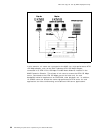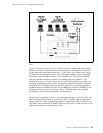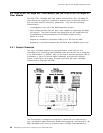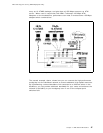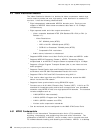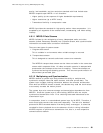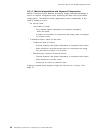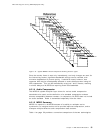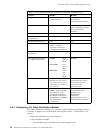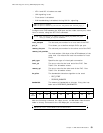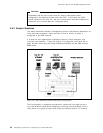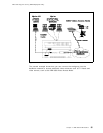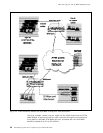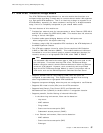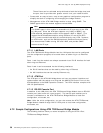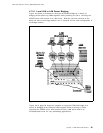
This soft copy for use by IBM employees only.
Table 4. Video Distribution Module Comparison of MPEG-2 and Motion-JPEG
Feature MPEG-2 M-JPEG
System Layer Provides audio and video
synchronization.
No system layer, that is,
no standard
synchronization method.
Record on Servers Yes Must record video and
audio separately, leading
to synchronization
problems.
Motion Compression Yes No
Standard Auto
Compression
Yes No
Compression Algorithm DCT DCT
MPEG-1 Compatibility System layer can carry
MPEG-1. MPEG-2
equipment downward
compatible with MPEG-1.
No
Private Data for Closed
Captioning
Yes No
Bandwidth Requirements
for High Quality Video
I-Frame Less
than 18
Mbps.
I+P Frame Less
than 12
Mbps.
IPB Frame Less
than
6-8
Mbps.
20 Mbps
ATM Compatibility MPEG-2 Transport
Streams can be carried
over AAL5 and can take
advantage of variable bit
rate services.
Requires circuit-switched,
constant bit rate (AAL1)
services for accurate
voice and video
synchronization.
Standardization MPEG-2 video and
MPEG-1 audio encoding
are standard. H.310
encompasses MPEG-2
and defines operational
specifications for MPEG-2
over ATM video
conferencing.
Video conferencing and
transmission using
M-JPEG is not
standardized.
Proprietary
implementations cause
interoperability problems.
4.6.2 Configuring the Video Distribution Module
The Video Distribution Module is a relatively simple module to configure since it
is merely a target for an ATM stream from another source. The process is as
follows:
•
Enable the VDM port as a UNI interface:
In the following example:
− The second port of the VDM for our video output is set.
52 ATM Workgroup Solutions: Implementing the 8285 ATM Switch



